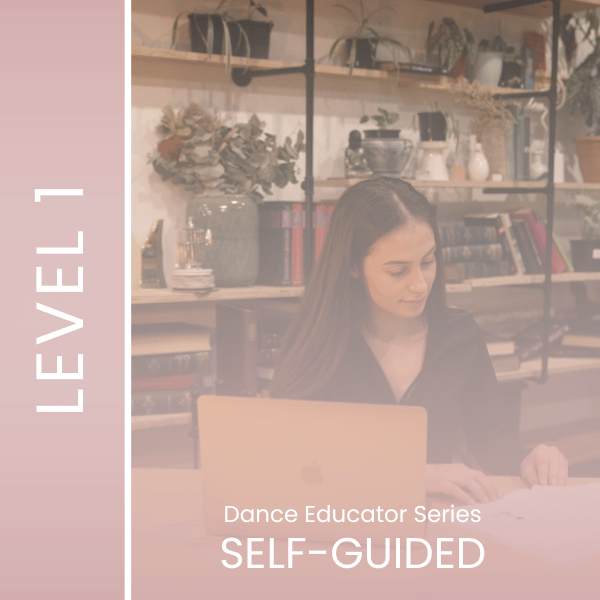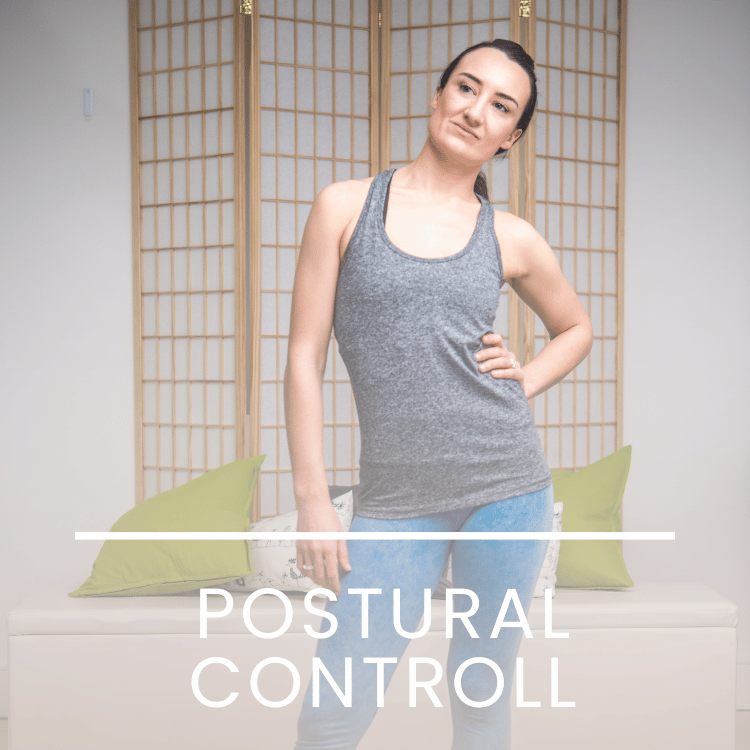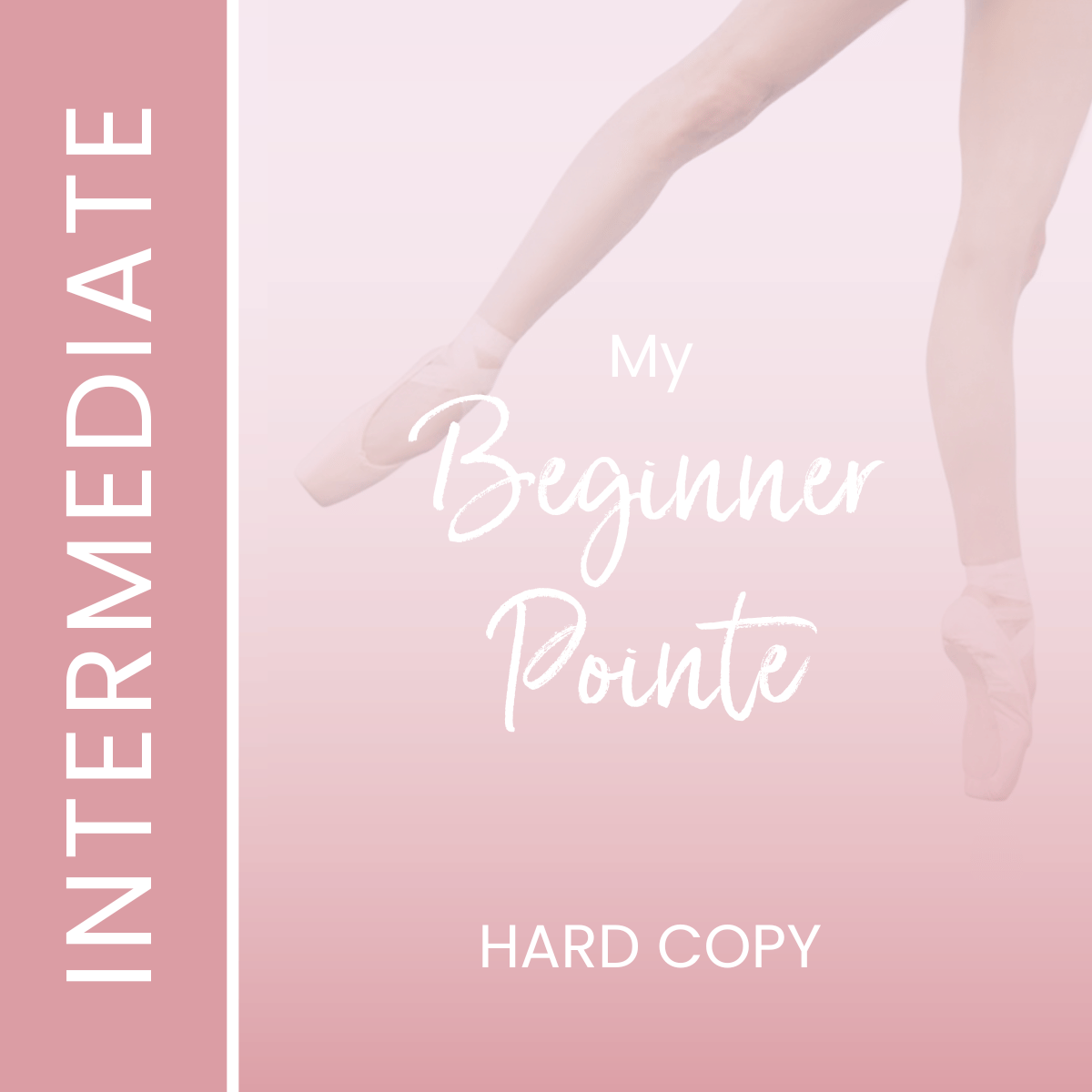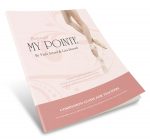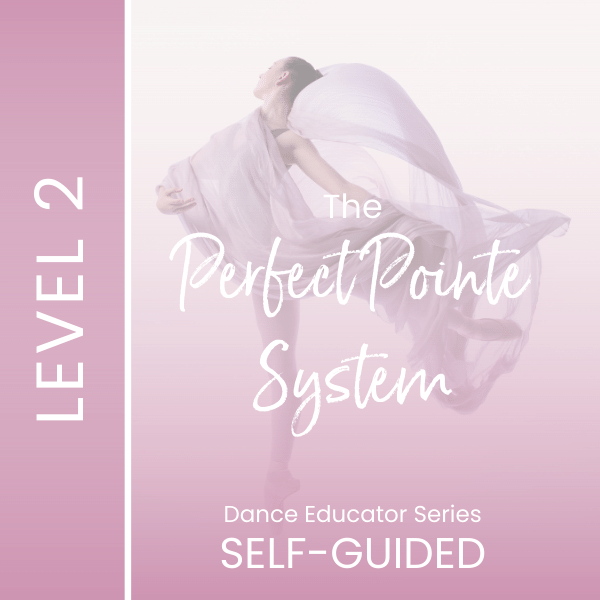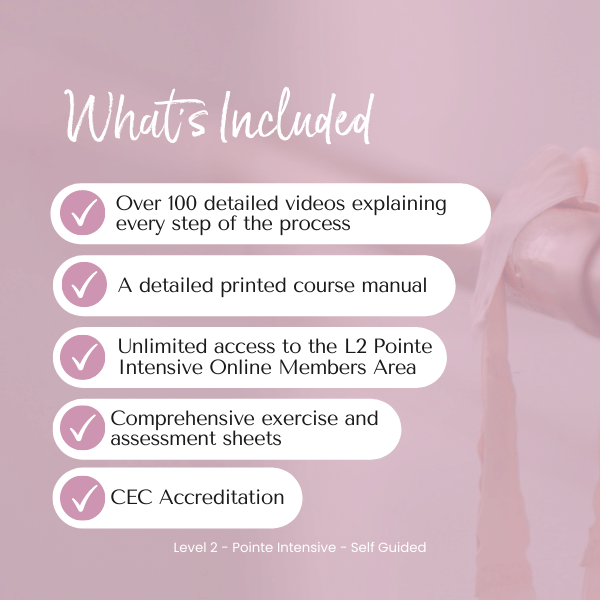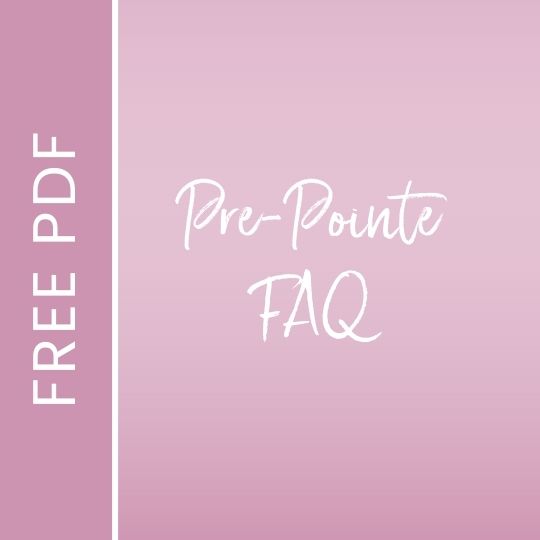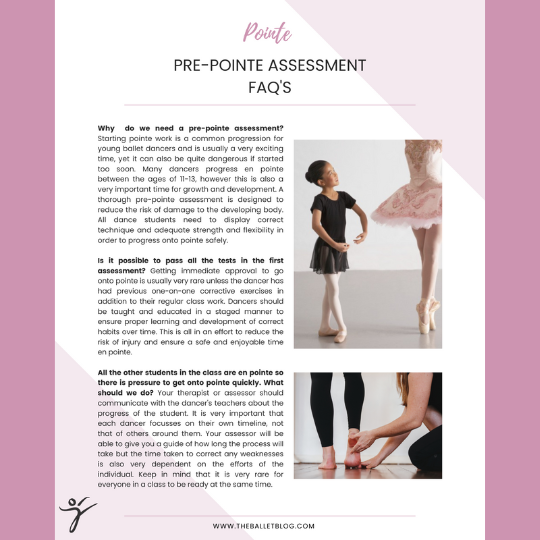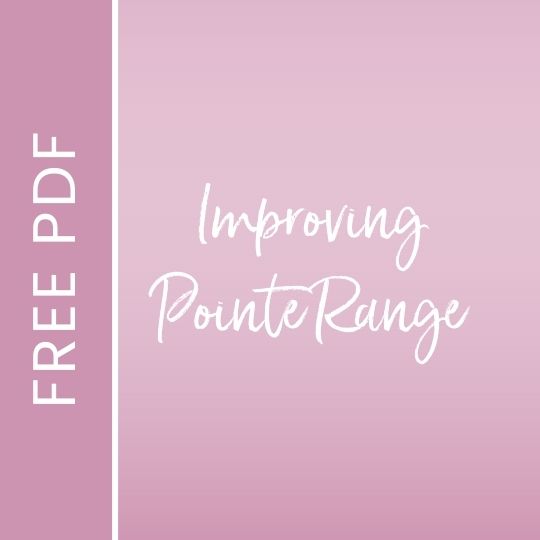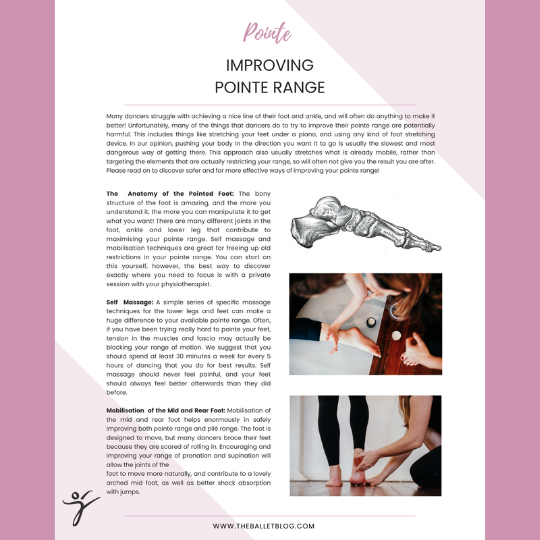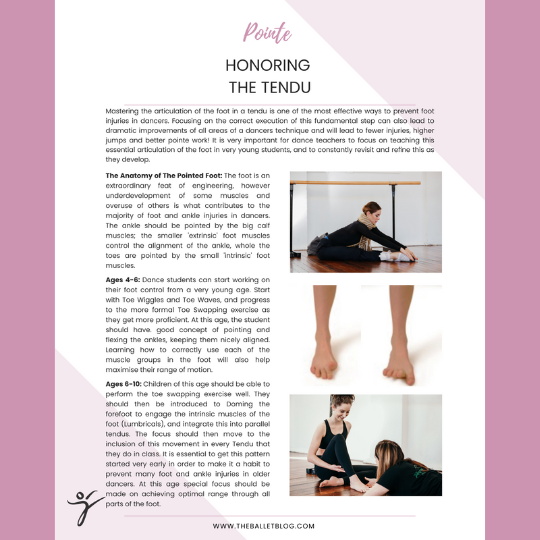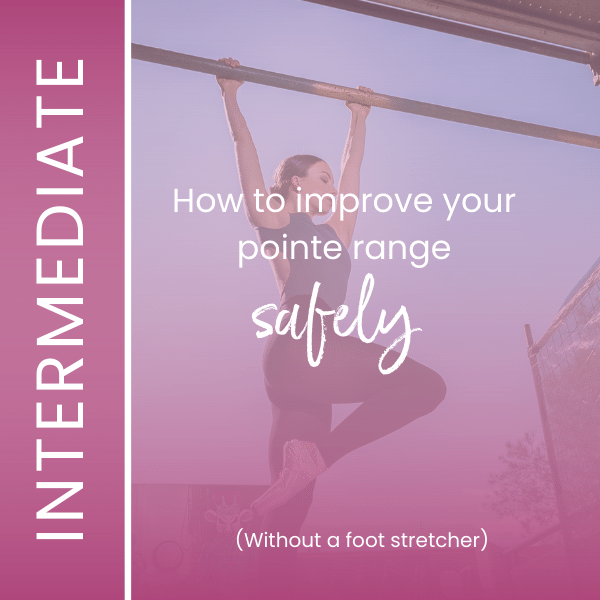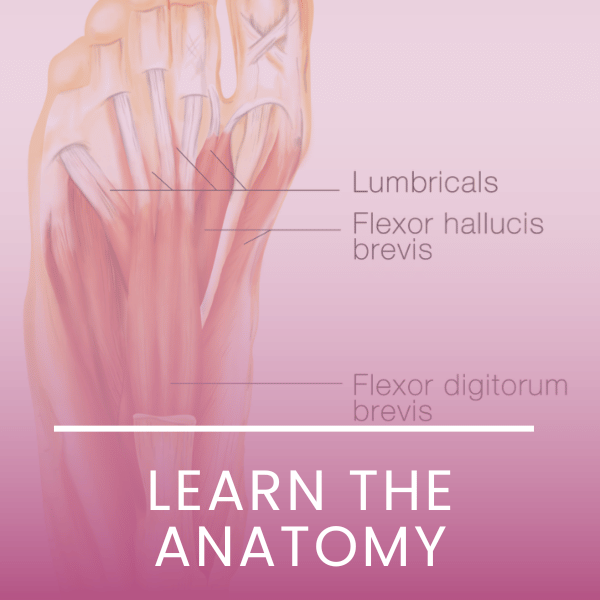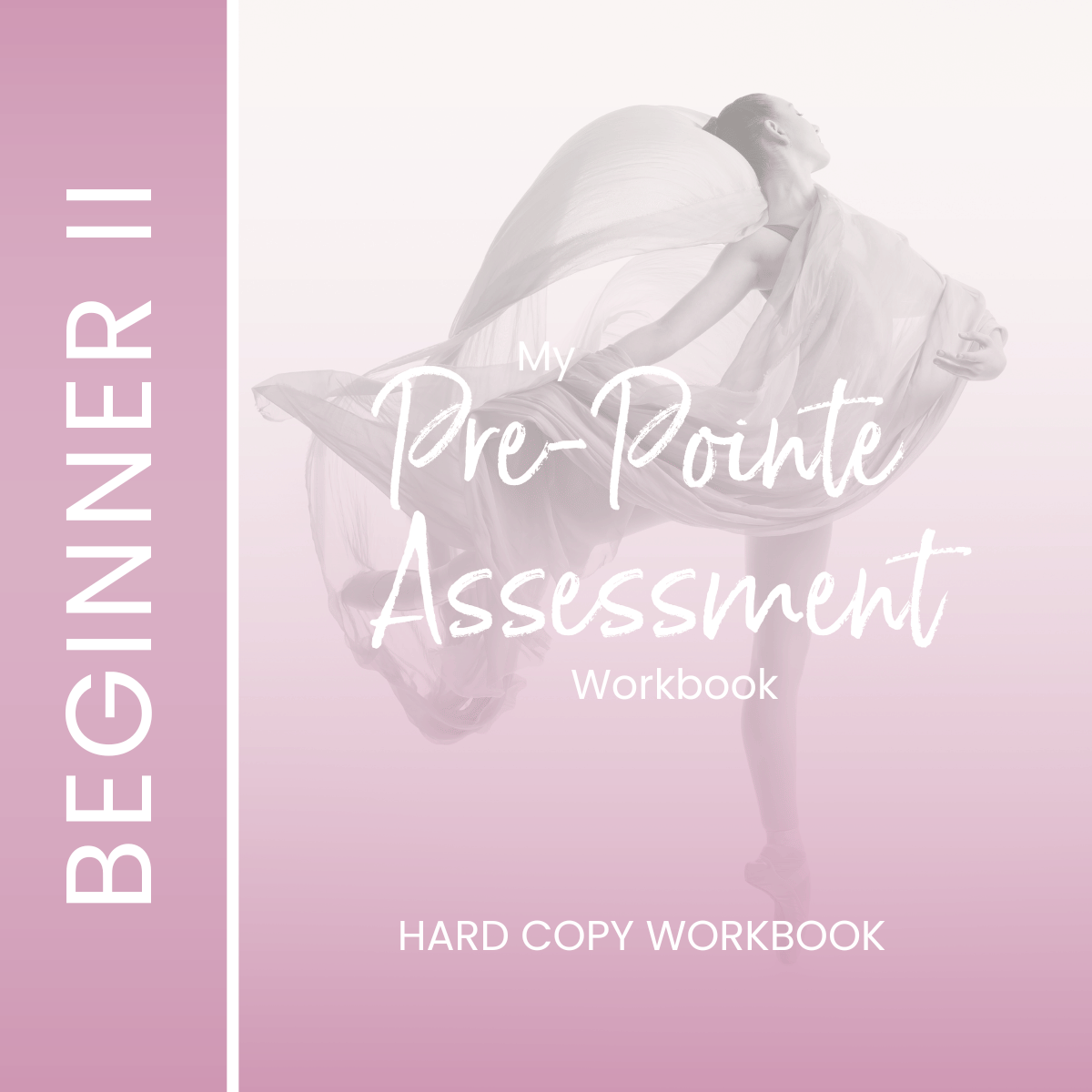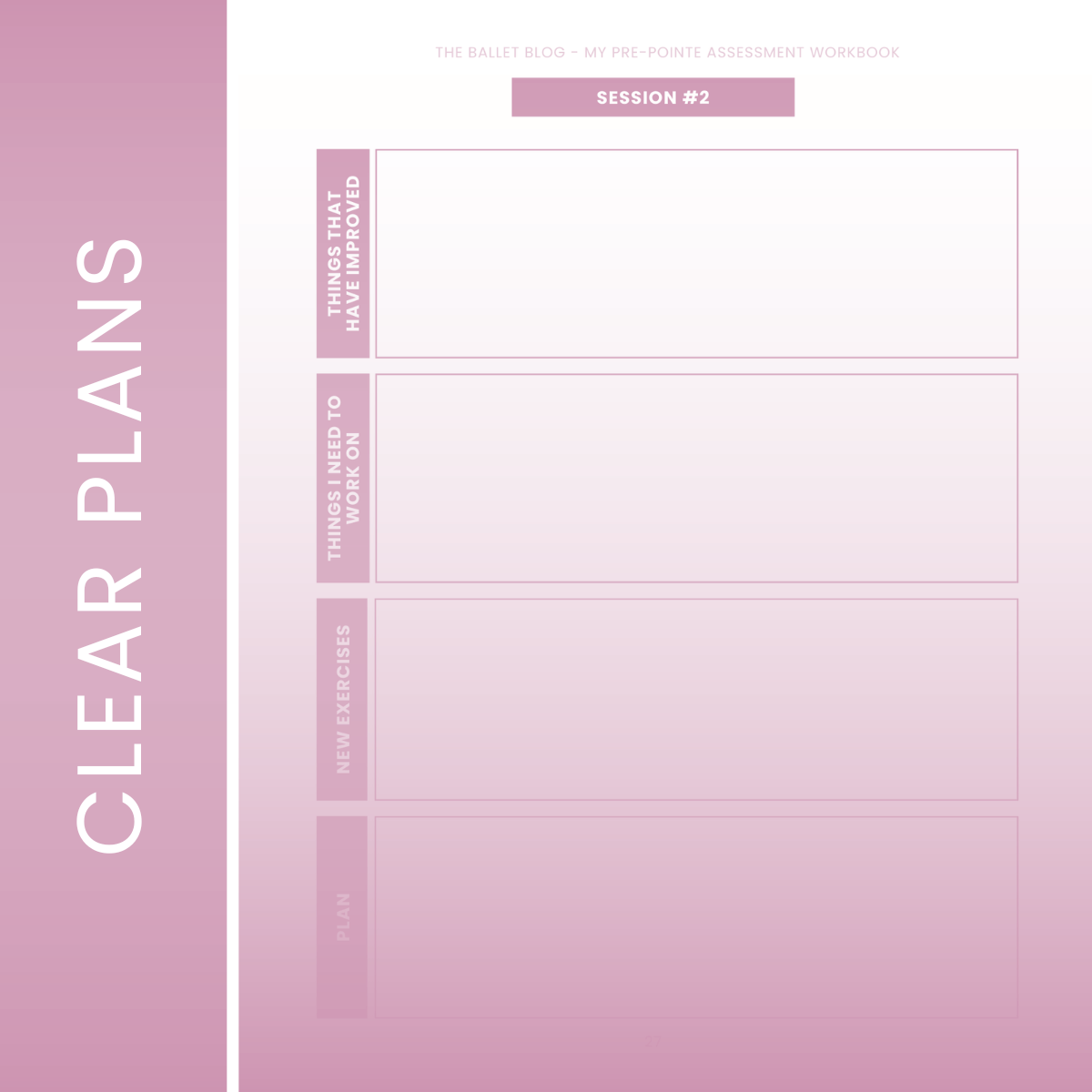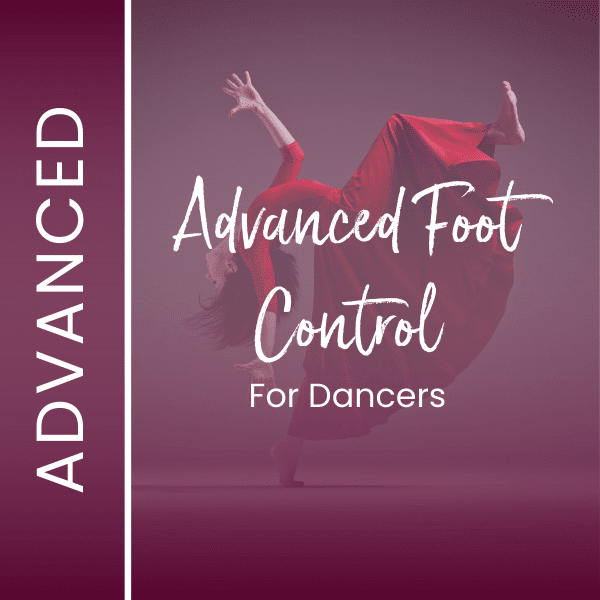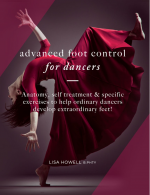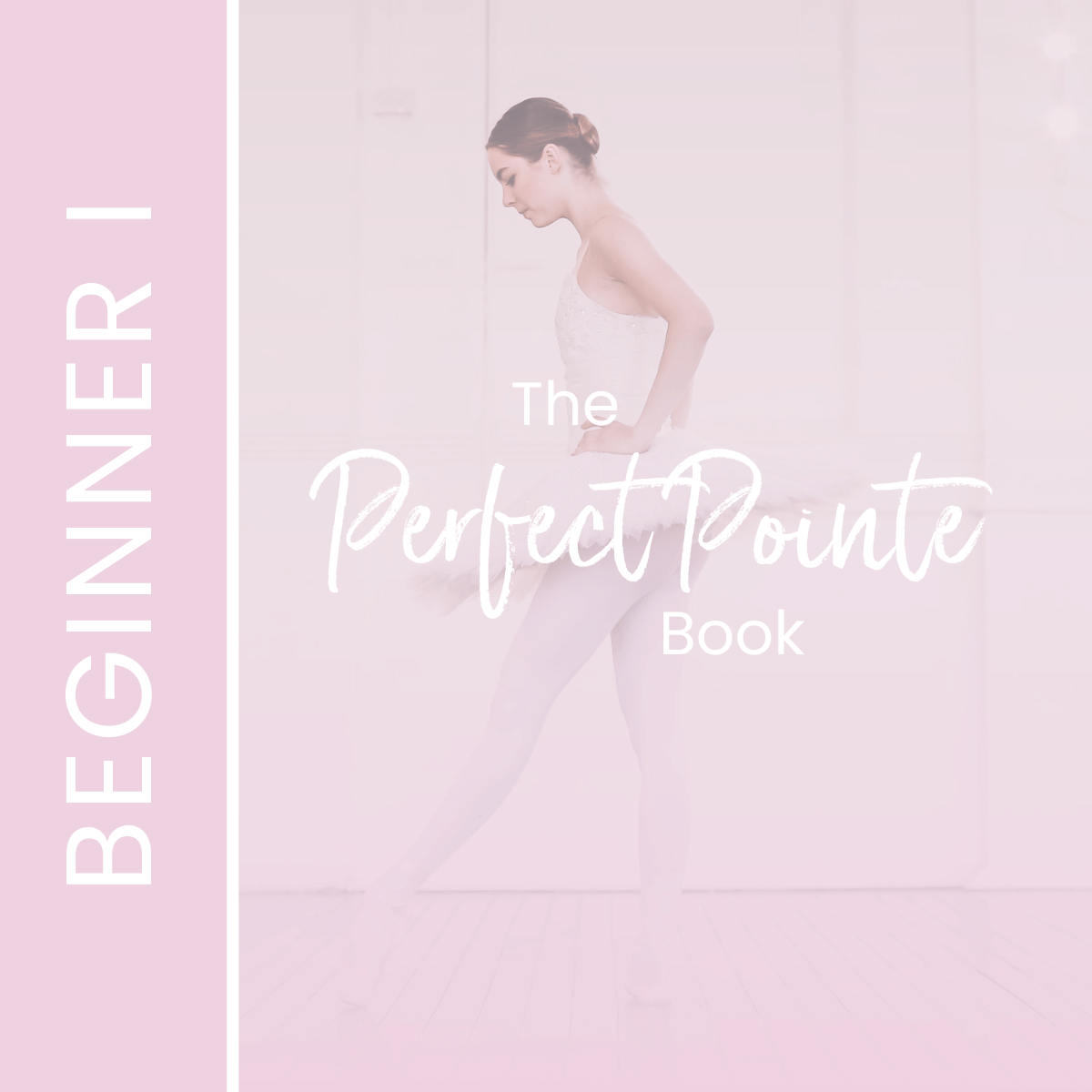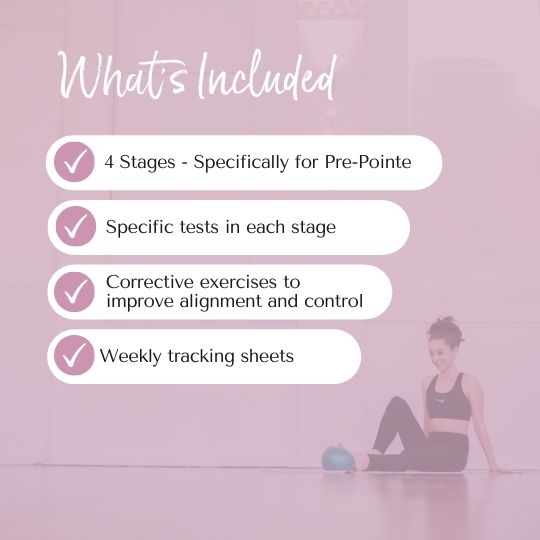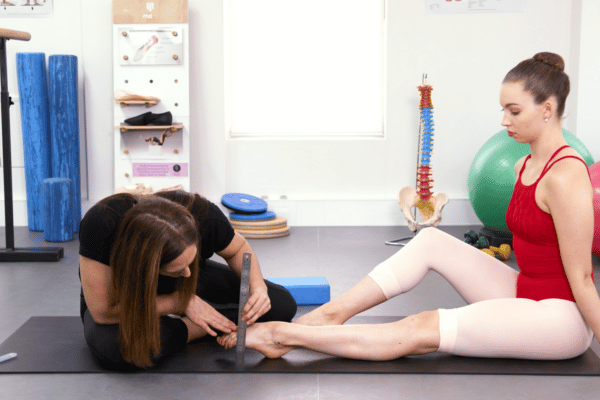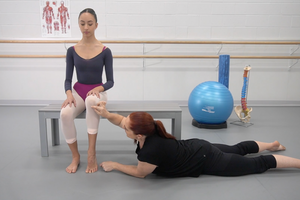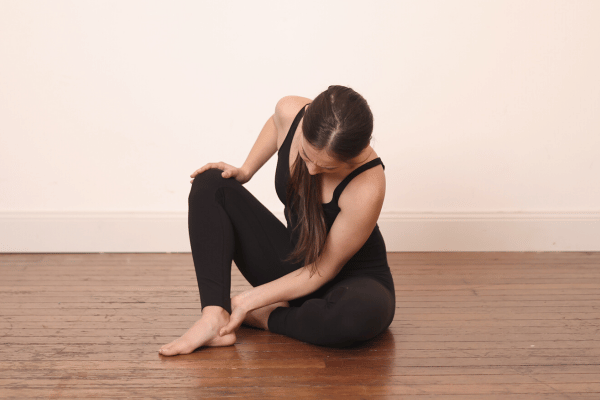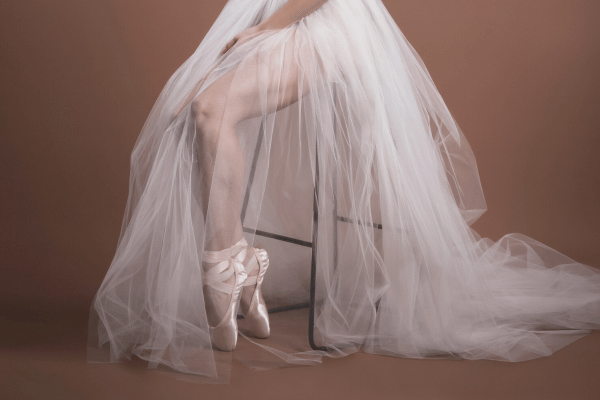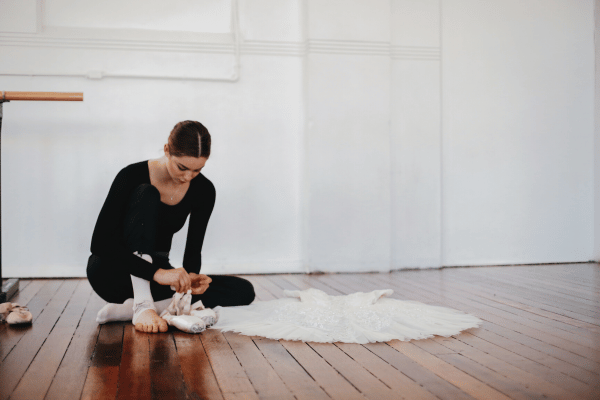How To Improve Restricted Pointe Range
Restricted pointe range is one of the biggest problem areas for young dancers and something that I am often asked to talk about in my workshops. When most dancers think of pointe range, they will often think that they have insufficient ankle range when in fact it's more an issue of strength. What I have found is that dancers will often have enough range to make a nice line with their foot but will lack the necessary strength to articulate the foot well. Most dancers when conditioning their feet will overlook the strengthening part of their routine and concentrate their focus on the stretching of their feet. While this may benefit some this may not be the ideal routine for all dancers, especially those that already have sufficient mobility.
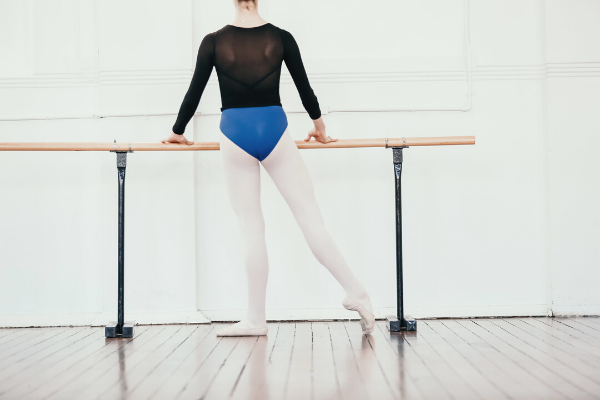
Strengthening the foot is absolutely essential when looking to improve pointe range. Learning how to activate the important muscles and decreasing the work from unnecessary muscles is imperative. In my program "How to Improve Pointe Range Safely Without a Foot Stretcher", I go through exercises to isolate, activate and integrate the critical muscles that help achieve beautiful lines. These involve the intrinsic muscles of the foot and the deep calf muscles that are often overlooked when conditioning dancers' feet.
Before starting any program a dancer should understand the exact areas that either need strengthening or mobilising. Looking at the way the foot responds to certain stretches will give a good insight into the areas that are causing restriction. One certain stretch is the big toe stretch that utilises the windlass mechanism of the foot, a natural mechanism that the body exhibits in response to stretch. This will often show if the restriction is in the midfoot or further back in the back of the ankle.
This has been taken from our online course "How To Increase Your Pointe Range Safely Without A Foot Stretcher" which goes through our method for increasing your pointe range.
This has been taken from our online course "How To Increase Your Pointe Range Safely Without A Foot Stretcher" which goes through our method for increasing your pointe range.
Looking at mobility in the whole lower leg is important when trying to increase pointe range. Restricted mobility in the foot does not just include the mobility around the ankle joint. It includes muscular, bony, and fascial mobility throughout the whole foot. Increasing your range in each of the little joints of the foot will be much more beneficial for a dancer than continuously stretching their feet under a piano. Treating the foot as a whole unit rather than a series of interconnected parts will see little improvement in range and may lead to injury for overuse. Small increases in each area and in all domains of mobility will lead to an overall increase in the total mobility of the foot and will preserve the dynamic integrity of the foot. This means that a dancer will continue to have beautiful control over their feet, an essential component for beautiful lines.
In this video, we look at one of the techniques that we use to increase fascial mobility of the lower leg. This area is prone to tension and can be a big contributor to restricted range as the muscles there are the powerhouse muscles for plantar flexion (pointing). If their capacity is compromised a dancer will not be able to work them as hard and will have decreased range as a consequence. Cupping helps hydrate the fascial layers that surround the muscles and increase restorative flow to these muscles.
If she’s gone through all of these things and she’s done all the massage and she’s done all the stretching, seen some improvements but then stopped, it may be time to get a plain film x-ray of her ankle. So looking at the ankle in a pointed position and just seeing if there’s any bony restriction at the back.
We all have something called a posterior tubercle which is at the back, some people have a big one and some people have a whole extra bone, it’s called an Os Trigonum and approximately 20% of people actually have one, it can block range in the back of the ankle. So you need to know if this is actually blocking her range. Often it can be worked around if it’s not causing any pain; dancers can learn to work with it. You can work on maximising the range as much as possible through the middle part of the foot and by releasing up deep into the back of the calf. If there is pain at the back and if she is looking at a professional career, it is possible in some cases to have that removed, but obviously, surgery needs to be avoided at all costs. But some people do have this procedure done and it frees up quite a bit of range at the back of the ankle.
And also take note if she has any hyperextension in her knees. Sometimes people have enough ankle range but if their needs are a little hyperextended that actually needs slightly more range to really get up onto the shoes, especially standing in second.
Pointe Resources
If you are looking to delve deeper into understanding pointe work, check out the following programs:

